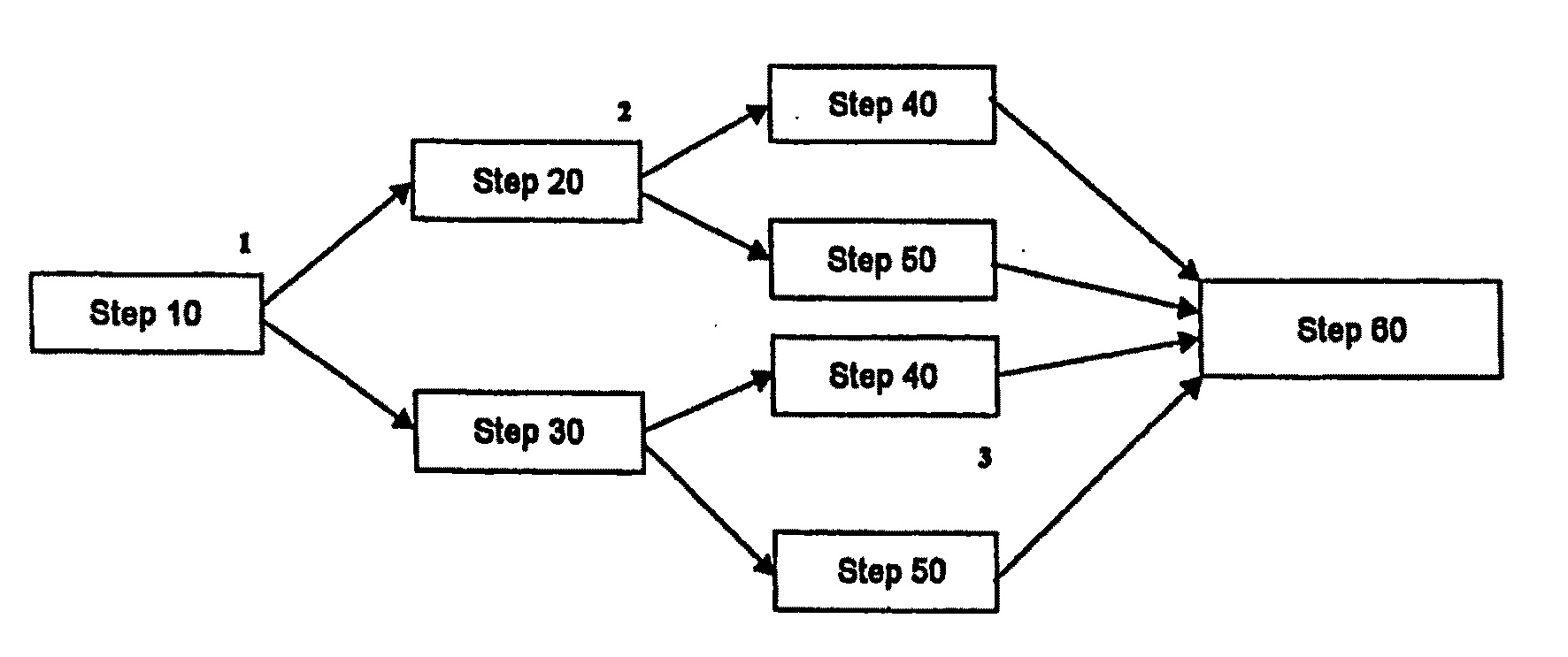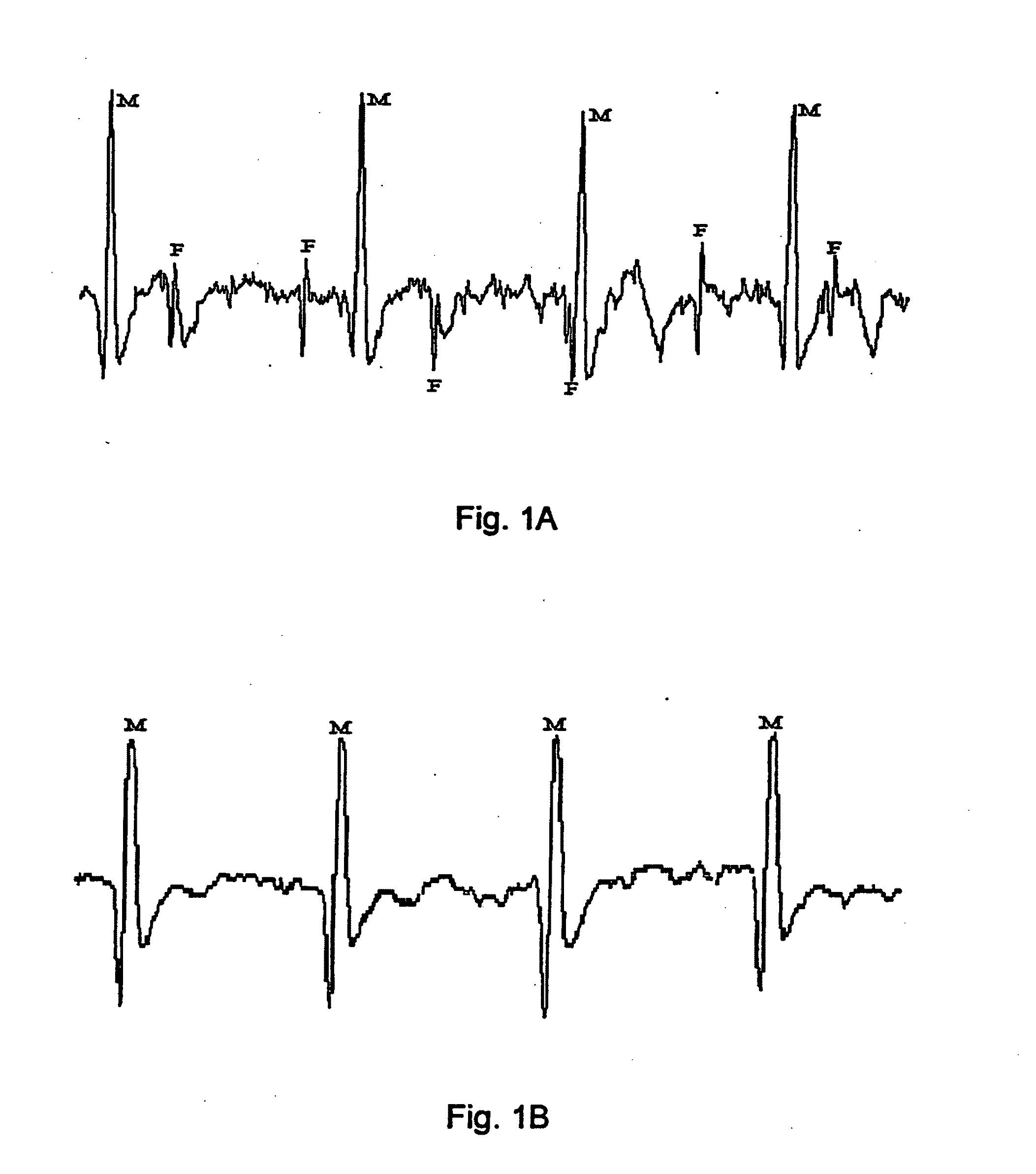Apparatus and method for detecting a fetal heart rate
a technology of fetal heart rate and applicator, which is applied in the field of applicator and fetal heart rate detection, can solve the problems of limiting the use of systems in hospitals, limiting the use of doppler ultrasound, and invasive long-term recording of fhr using ultrasound
- Summary
- Abstract
- Description
- Claims
- Application Information
AI Technical Summary
Benefits of technology
Problems solved by technology
Method used
Image
Examples
Embodiment Construction
[0094]FIG. 2 is a block diagram showing apparatus for detecting the heart beat of a fetus. The apparatus comprises three detectors 1,2,3 which are coupled to an amplification and filter stage 4. The output of the amplification and filter stage 4 is coupled to an analogue-to-digital converter 5, which is in turn connected to a processor 6. The processor 6 is coupled to a memory 7 and a display 8.
[0095]The system operates as follows. Each detector 1,2,3 consists of two passive cutaneous conductive electrodes positioned on the abdomen of the mother so as to detect ECG signals generated in the region of the mother's abdomen. An example of a suitable electrode arrangement is shown in FIG. 3. In this case, the electrodes e1,e2 correspond to detector 1, electrodes e3,e4 correspond to detector 2 and electrodes e5,e6 correspond to detector 3. Reference numeral 10 represents the fetus, with 10A representing the head and 10B the fetal back.
[0096]Electrical signals detected by the detectors 1,2...
PUM
 Login to View More
Login to View More Abstract
Description
Claims
Application Information
 Login to View More
Login to View More - R&D
- Intellectual Property
- Life Sciences
- Materials
- Tech Scout
- Unparalleled Data Quality
- Higher Quality Content
- 60% Fewer Hallucinations
Browse by: Latest US Patents, China's latest patents, Technical Efficacy Thesaurus, Application Domain, Technology Topic, Popular Technical Reports.
© 2025 PatSnap. All rights reserved.Legal|Privacy policy|Modern Slavery Act Transparency Statement|Sitemap|About US| Contact US: help@patsnap.com



